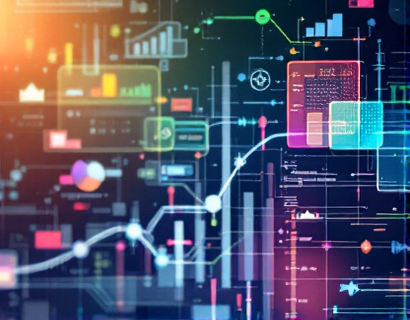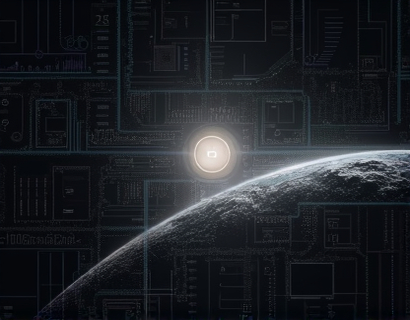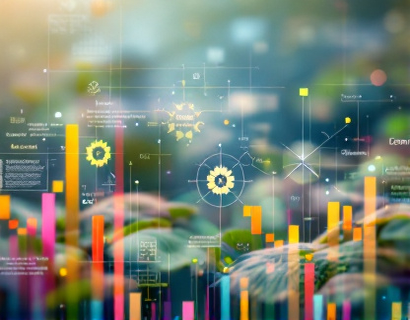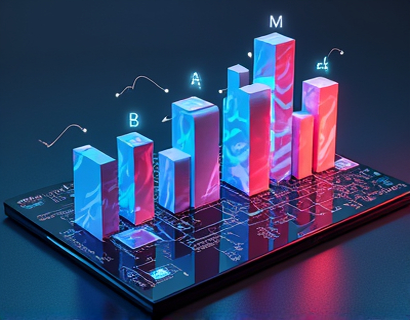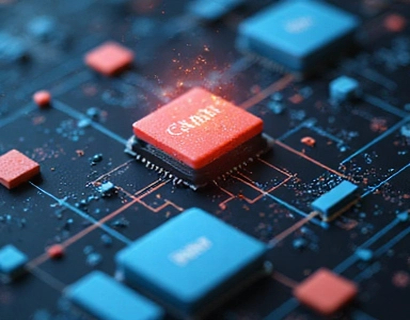Decentralized Productivity 3.0: Harnessing AI and Crypto for Next-Gen App Ecosystems
The evolution of digital productivity tools has reached a pivotal point with the convergence of Artificial Intelligence (AI) and cryptocurrency, ushering in an era of Decentralized Productivity 3.0. This transformation promises to redefine how we interact with digital applications, enhancing efficiency, security, and user experience. By integrating these advanced technologies, the next generation of app ecosystems is poised to offer seamless, decentralized, and intelligent solutions that streamline tasks and revolutionize the way we work.
Understanding Decentralized Productivity
Decentralized Productivity 3.0 represents a paradigm shift from centralized systems to decentralized networks, leveraging blockchain technology to create transparent, secure, and user-controlled environments. Unlike traditional centralized systems where data and control are held by a single entity, decentralized systems distribute these elements across a network of nodes, ensuring no single point of failure and enhancing data integrity.
The integration of AI into this decentralized framework further amplifies its potential. AI can optimize workflows, predict user needs, and automate repetitive tasks, all while maintaining the decentralized principles of transparency and user sovereignty. This fusion creates a powerful synergy that not only improves productivity but also empowers users by giving them greater control over their digital interactions.
Enhanced Security through Cryptography
One of the cornerstone features of decentralized systems is enhanced security, achieved through advanced cryptographic techniques. Cryptography ensures that data is encrypted and can only be accessed by authorized parties, reducing the risk of breaches and unauthorized access. In the context of Decentralized Productivity 3.0, this means that user data and transactions are secure, fostering trust and confidence in the ecosystem.
Blockchain technology, the backbone of decentralized systems, uses cryptographic hashes to link blocks of data, creating an immutable ledger. This immutability ensures that once data is recorded, it cannot be altered without consensus from the network, making it an ideal solution for maintaining the integrity of productivity tools and applications.
AI-Driven Efficiency and Automation
AI plays a crucial role in enhancing the efficiency of decentralized productivity tools. Machine learning algorithms can analyze user behavior and preferences, automating routine tasks and providing personalized recommendations. For instance, AI can manage calendar scheduling, prioritize tasks based on urgency, and even predict potential bottlenecks in workflows, allowing users to focus on high-value activities.
Moreover, AI can facilitate seamless integration between different decentralized applications, creating a cohesive and user-friendly experience. By understanding the context and requirements of each application, AI can orchestrate interactions, ensuring smooth transitions and minimizing user effort. This level of automation not only saves time but also reduces the potential for human error, leading to higher productivity and accuracy.
Decentralized Identity and Access Management
Decentralized Productivity 3.0 also addresses the critical issue of identity and access management. Traditional systems often rely on centralized identity providers, which can be vulnerable to attacks and data breaches. In a decentralized model, users have full control over their digital identities, stored securely on their devices and managed through blockchain-based identity wallets.
This approach not only enhances security but also provides users with the ability to manage their permissions and access rights granularly. AI can further enhance this by dynamically adjusting access levels based on real-time context and user behavior, ensuring that only authorized actions are performed. This level of control and flexibility is essential for maintaining both security and usability in decentralized environments.
Tokenization and Incentive Mechanisms
Tokenization is another key aspect of Decentralized Productivity 3.0, offering innovative ways to incentivize participation and reward contributions. By issuing tokens that represent value within the ecosystem, platforms can motivate users to engage actively, contribute content, and participate in governance decisions. These tokens can be used to pay for services, access premium features, or even vote on protocol upgrades, creating a community-driven and self-sustaining ecosystem.
AI can optimize these tokenization mechanisms by analyzing user behavior and adjusting token distributions to maximize engagement and utility. For example, AI can identify high-contributing users and reward them with tokens, fostering a collaborative and productive community. This approach not only enhances user retention but also aligns the interests of users with the overall health and growth of the platform.
Interoperability and Ecosystem Integration
One of the significant challenges in decentralized ecosystems is ensuring interoperability between different platforms and applications. Decentralized Productivity 3.0 addresses this by adopting standardized protocols and interfaces, allowing seamless communication and data exchange between various decentralized services. This interoperability is crucial for creating a cohesive and integrated user experience, where users can effortlessly switch between different tools and applications without losing context or data.
AI can play a pivotal role in facilitating this interoperability by intelligently managing data formats, ensuring compatibility, and optimizing data transfer processes. By automating these tasks, AI reduces the complexity and friction associated with integrating multiple decentralized services, making the ecosystem more user-friendly and accessible.
Case Studies and Real-World Applications
Several projects and platforms are already demonstrating the potential of Decentralized Productivity 3.0. For instance, certain decentralized workspaces leverage AI to manage project workflows, assign tasks based on user availability and skills, and provide real-time analytics to track progress and performance. These platforms use blockchain to ensure data integrity and secure transactions, while AI enhances the user experience through personalized insights and automation.
Another example is a decentralized content creation and monetization platform that uses AI to curate and recommend content based on user preferences and engagement patterns. Tokens are used to reward creators and incentivize high-quality content, while AI ensures that the platform remains dynamic and responsive to user needs. This combination of AI and decentralization creates a fair and efficient ecosystem that benefits both creators and consumers.
Future Prospects and Challenges
The future of Decentralized Productivity 3.0 holds immense potential, with ongoing advancements in AI and blockchain technology paving the way for even more sophisticated and user-friendly applications. However, several challenges must be addressed to fully realize this vision. These include scaling blockchain networks to handle high volumes of transactions, improving the user interface and experience for non-technical users, and ensuring regulatory compliance in a rapidly evolving legal landscape.
AI will continue to play a crucial role in overcoming these challenges by providing solutions for optimization, security, and user engagement. As the technology matures, we can expect to see more widespread adoption and integration of decentralized productivity tools, transforming the way we work and collaborate in the digital age.
In conclusion, Decentralized Productivity 3.0 represents a significant leap forward in the evolution of digital tools and ecosystems. By combining the strengths of AI and cryptocurrency, this approach offers a secure, efficient, and user-centric alternative to traditional centralized systems. As the technology continues to advance, it will undoubtedly reshape the future of productivity, empowering users and fostering a more decentralized and collaborative digital world.





